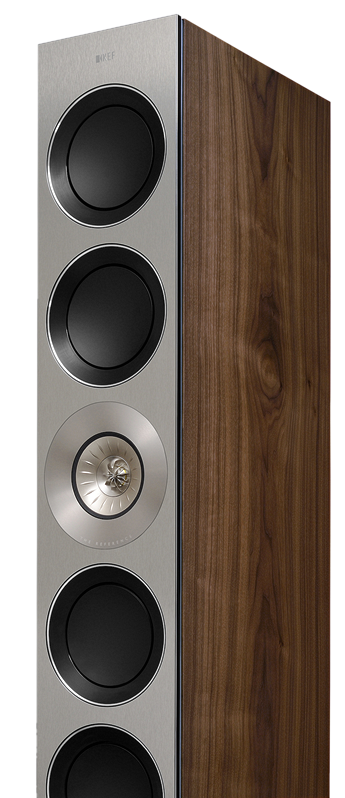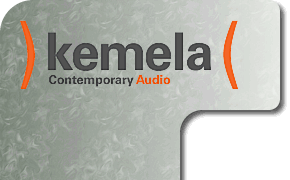

KEF Reference Loudspeakers
KEF Reference Speakers - Overview
KEF continues forty years of the purist and most accurate sound reproduction with a new range of loudspeakers that simply merit the title of - KEF Reference Loudspeakers. We summarize here some of the design details that are discussed in depth in KEF's in 50 page white paper and our impressions of the sound. KEF first applied the term "Reference" to loudspeakers that were especially accurate and pure-sounding, pushing the boundaries of natural sounding loudspeakers without drama, exaggeration or artifice.
The challenge to better the existing reference line of speakers that already measured very well compared to other leading manufacturer's top models would need development in multiple aspects and require a talented team of engineers to fundamentally differentiate and elevate them to the superlative. Top notch engineers from leading university acoustical engineering departments would be needed and experienced individuals with the knowledge and understanding of what makes loudspeakers subjectively sound good in the listening environment - something KEF has always been strong on. Expensive cutting edge technology design tools and a methodical collaborative approach would be needed - no voodoo or kitchen table fanaticism.
Once design freeze had been reached production would be implemented as before with a few skilled craftsman.
KEF Reference Loudspeakers are made by hand in the UK with 0.5dB paired-matched drivers and individually measured against a laboratory maintained reference standard.
So what's new in the latest Reference speakers?
The Cabinet and Baffle
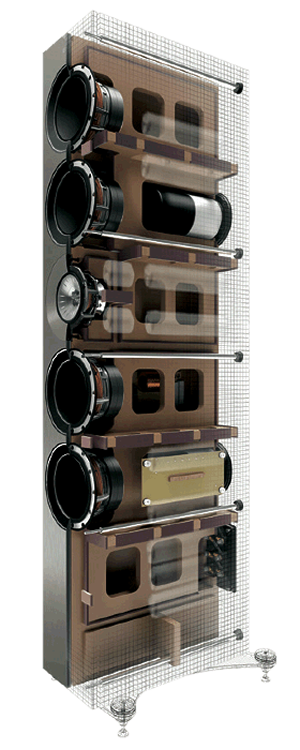
KEF paid close attention to the acoustical function of the front baffle assembly. The massively rigid laminated aluminum and resin composite front baffle of KEF Reference Loudspeakers interface to cabinet via high loss damping pads, and is very securely attached with a system of high tensile bolts that run through to the back of the cabinet. Panel resonance, stray internal reflections, and internal standing waves (which cause uneven driver output) are eliminated in this extremely well designed and totally inert cabinet. Free of boxy colorations, the bass and midrange frequency sounds are reproduced beautifully accurately. A shallow waveguide (the "shadow flare") is a further refinement built in to the front baffle that offsets the diffraction effects of the cabinet edges. Attention to detail is continued in the supporting plinth that has a built-in spirit level and easily adjustable spikes. Master craftsman build and finish KEF Reference Loudspeakers with pair-matched wood veneers or lustrous piano gloss. Immaculate craftsmanship and the strikingly fresh and unfussy contemporary design conveys nothing less than modern manufacturing and very much a speaker in line with today's aesthetic.
The Drivers
KEF Reference Loudspeakers use a brand new 11th generation Uni-Q midrange/tweeter driver developed from the flagship Blade loudspeaker. It covers the entire critical six octaves of the audio band above 350Hz without the dips or lobbing effects found in typical multi-driver baffle mounted designs. The low Uni-Q/bass driver cross over frequency works especially well in the symmetrical "D'Appolito" driver arrangement. In typical 2-way bass/midrange-tweeter D'Appolito arrangements with higher frequency crossovers, acoustical wavelengths are small compared to the inter driver spacing and interference dips are unavoidable. The midrange cone is designed as a waveguide, and the minimally interrupted transition to the shadow flare waveguide of the baffle, and the tangerine waveguide of the tweeter, ensures a smooth matched dispersion between these drivers and simplifies the requirements for both the upper and lower crossovers The tangerine waveguide normalizes the wave front relative to the dome of the tweeter and increases acoustic coupling for cooler operation at the 2 KHz region and superb transient response. KEF Reference Loudspeakers speakers are paired-matched to 0.5dB.
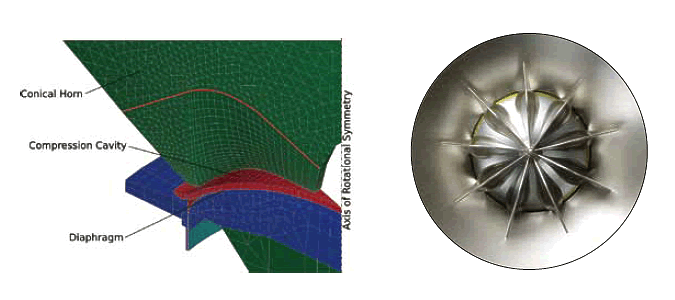
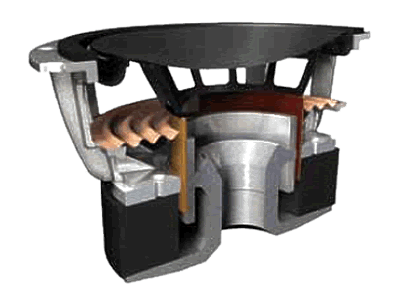
For the bass frequencies below 350 Hz, new driver technologies address power handling, interactions, distortion, and linearity. The shallow profile aluminum diaphragm break-up, smoothly transitions to the baffle and is supported at the nodal position by a vented coupler rather than being directly connected to the voice coil. This arrangement gives greater air movement away from the diaphragm and the ability to use much larger voice coils and rear venting hole than normal. This facilitates heat transfer and greatly reduces power compression. The magnetic flux design of the motors, and the conductive regions that control the changes in voice coil inductance with position, all receive advanced computer analysis to reduce distortion to the lowest possible levels. Distortion is further reduced by using multiple smaller drivers which also provide excellent horizontal dispersion.
The Crossover
To reduce time-smear, an effect associated with complex high-order crossovers, and because KEF can control all aspects of the driver's electrical parameters, KEF Reference Loudspeakers use low-order crossover filters. Conjugate networks are included in the crossover circuit so the amplifier "sees" a more uniform and easy to drive load. Consequently more of the amplifier's power is delivered to the drivers and less is dissipated in the output stages as heat and KEF Reference Loudspeakers are compatible with a larger range of amplifiers delivering a more consistent acoustical output.
Computer modeling of optimal crossovers for the driver's frequency and phase response is only part of the design development process. Methodical onboard component substitution was undertaken to subjectively identify the best sounding components and board layout consistent with the purity and low distortion strived for in KEF Reference Loudspeakers. This process simply cannot be done with computers and many KEF team members exhaustively verified and auditioned all the high grade components over many months. As in previous versions of KEF's reference level speakers, separate boards are used for the different sections of the crossover A further detail is the capacitors in the higher frequency section are vibration damped with mastic.
Room Response Contouring

Two different port options are provided with KEF Reference Loudspeakers for best alignment to different room acoustics. Changing the tuning of the cabinet directly gives a more useful effect without the penalty of further complexity in the crossover
Review and Summary
Partnered with various amplifiers in the 150-350 watt range KEF Reference Loudspeakers offer precision focus within a huge sound stage with plenty of space between the musicians. As with all KEF speakers there is great clarity; operatic and contemporary vocals were very alive, natural and expressive. They were neither nasally, throaty or chesty. Low level consonants were fully present making lyrics easy to follow as was the breathing and vocal phrasing. Microphone type, set up and age of the digital recording was brought to light.
Temporal resolution is of a very high order and the speakers handle complex sounds well. French school organ music had distinctive pipe tonal shading and phrasing even in the more dense passages and appeared to have less intermodulation effects on higher frequencies. Bass was not just tight but really propulsive and always in control almost leading the other parts. Fast articulated romping stomping bass lines were foot taping exhilarating not just on one, but both feet!. A 40-50K system using these speakers offers a lot of movement and flow and was a whole lot of fun. Other speakers sounded like they had fewer dynamic levels and a lagging bass. Considering the development effort, technology, craftsmanship and sonic performance,the under 20K asking price is very reasonable.
